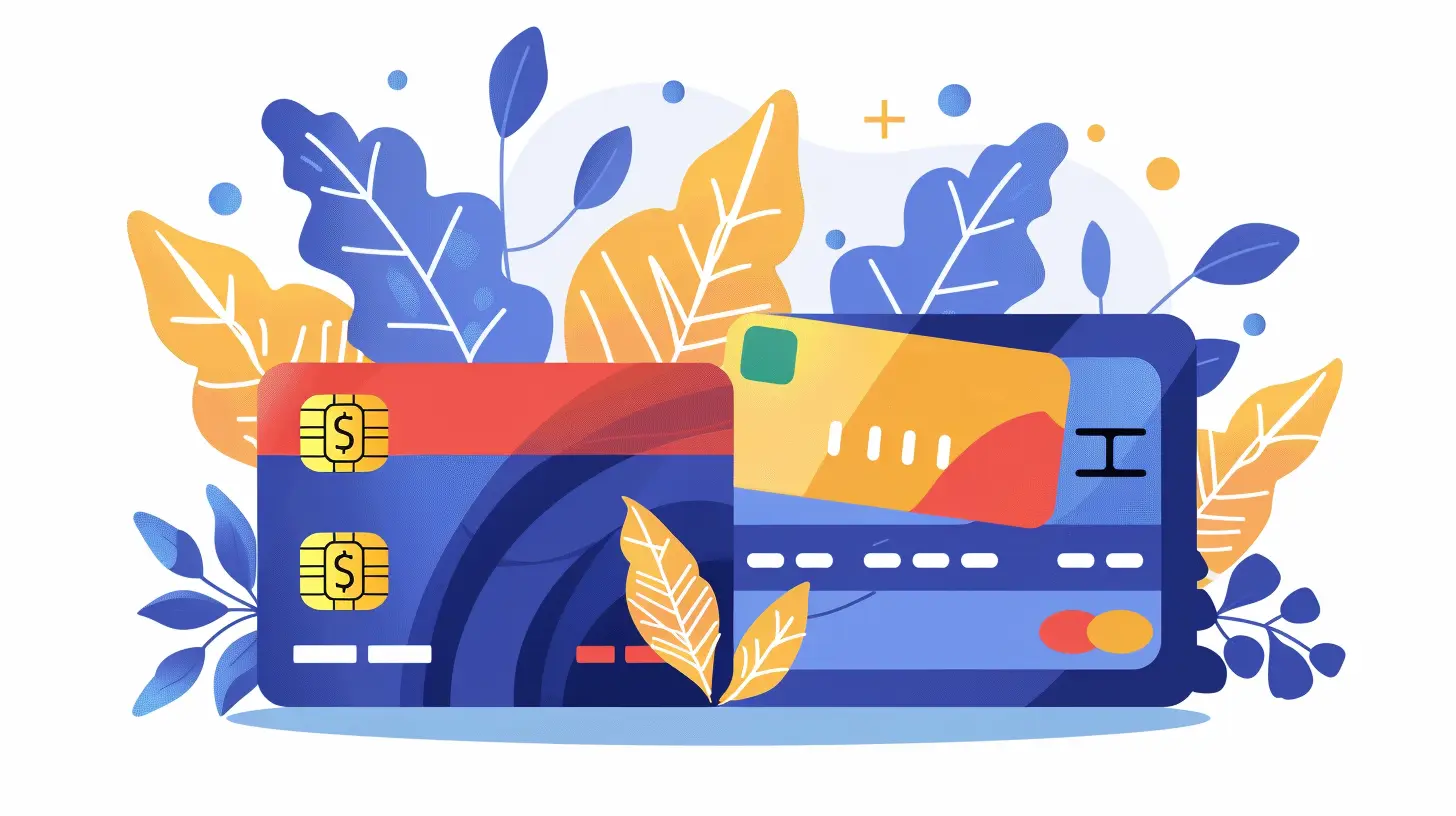Is a Low Interest Credit Card Right for You?
4 July 2025
Credit cards can be a real financial lifesaver—or a slippery slope into debt. If you've been eyeing a low interest credit card, you're probably asking yourself the big question: is it the right move for you? Let’s break it down, step-by-step, to help you figure that out.

What Is a Low Interest Credit Card, Anyway?
Let’s start with the basics. A low interest credit card typically offers a reduced annual percentage rate (APR) on purchases, balance transfers, or both. Sometimes, you'll even get a 0% introductory APR for a set period (usually 6 to 21 months), which can be huge if you’re planning a big purchase or trying to chip away at existing debt.Sounds simple enough, right? But like most things in personal finance, there’s more to the story.

Why People Go for Low Interest Credit Cards
So why are these cards even popular? The answer’s obvious: they save you money—that is, if used wisely.Here’s how:
- Lower APR = Lower Interest PaymentsIf you tend to carry a balance from month to month, a lower APR means you’re paying less in interest, giving you more breathing room in your budget.
- Helpful for Debt Consolidation
Have multiple credit cards or loans? You could transfer those balances to a single low interest card (ideally with a 0% APR offer), and potentially make your debt more manageable.
- Great for Big Purchases
Planning to buy new furniture or fund a home project? Spreading out payments over time without interest can be smarter than draining your savings.
But—not to throw cold water on your enthusiasm—these cards aren’t for everyone.

Understanding How Interest Works
Okay, time for a quick detour. To truly judge whether a low interest credit card is right for you, you need to understand how credit card interest actually works.Compounding Can Hurt You
Interest on credit cards is usually compounded daily. What that means is, the interest gets added to your balance, and then that new balance accrues even more interest. It's like a snowball rolling downhill.So if you’re carrying a balance, even a small percentage can add up—fast.
Let’s say you owe $5,000 and your card has an APR of 18%. Without paying it off quickly, you could end up tossing away hundreds (if not thousands) of dollars just in interest. A low interest card, on the other hand, might cut that APR in half...or more.

Who Should Consider a Low Interest Credit Card?
Here’s where you’ve got to take a good, hard look at your financial habits. These cards are not one-size-fits-all. Ask yourself a few honest questions:1. Do You Regularly Carry a Balance?
If you’re someone who rarely pays off the full statement balance each month (and let’s be real—most people don’t), a low interest card can significantly reduce your costs. That means more of your money goes toward the balance, and less vanishes into the black hole of interest charges.2. Are You Paying High Interest on Other Cards?
If you’re stuck with cards charging 20% APR or more, switching to one with a lower rate or taking advantage of a 0% balance transfer can be a game changer. You just have to be confident you’ll pay off the transferred balance before the promotional period ends.3. Are You Planning a Major Purchase?
A new appliance? Wedding expenses? Maybe some long-overdue dental work? Financing these on a low interest or 0% APR card, and then paying them off diligently, can save you loads in the long run.4. Do You Have Good Credit?
Here’s the catch—most low interest credit cards require good to excellent credit. If your score is hovering around the “fair” mark or below, you might not qualify for the most competitive rates. In that case, your priority might be improving your credit first.Who Might Want to Skip It?
Now, on the flip side, low interest credit cards might not be the right call if:- You always pay your balance in full. If you’re already avoiding interest charges by staying debt-free, the interest rate is irrelevant. Go for a rewards card instead.
- You want perks. Low interest cards typically skimp on rewards programs, travel benefits, and cash back features. If that’s more your style (and you’re financially disciplined), you might prefer a high-rewards card.
- You’re prone to overspending. The temptation to spend more “because you’re not paying interest” is real. If you think a low APR might encourage you to buy things you don’t need, it could backfire.
Pros and Cons of Low Interest Credit Cards
Let’s lay it all out in black and white.Pros
- ✅ Lower interest on balances- ✅ Useful for large purchases
- ✅ Good for debt management
- ✅ Often come with intro 0% APR offers
Cons
- ❌ May lack rewards or perks- ❌ Typically require good credit
- ❌ Some come with balance transfer fees
- ❌ Low APR might be temporary
Understanding the whole package is key. Don't let a shiny 0% APR teaser distract you from other card terms.
How to Choose the Right Low Interest Credit Card
So, feeling like a low interest credit card might be the right fit? Cool. But don’t just apply for the first one that pops up. Here’s how to pick a good one:1. Look at the APR (Not Just the Intro Rate)
Introductory rates can be enticing, but what happens after they expire? Always check the ongoing APR. If it's high, you might end up where you started.2. Watch for Balance Transfer Fees
That 0% APR on balance transfers sounds sweet—until you realize there's a 3-5% fee on the amount you transfer. For a $10,000 transfer, that’s up to $500... right out of your pocket.3. Read the Fine Print (Yes, Really)
You know those tiny letters we all love to ignore? They matter. Some cards have penalty APRs, late payment fees, or terms that make your promo rate disappear if you slip up just once.4. Consider Other Perks
Even though low interest cards are more about saving than earning, some still offer cash back or free credit score monitoring. It never hurts to get a little extra value.
Tips for Using a Low Interest Card Wisely
A low APR is a tool, not a license to overspend. Here’s how to really take advantage of it:- 📝 Create a payment plan. Treat the intro period like a countdown clock. Divide your debt by the number of months in the 0% window and stick to that payment amount.
- 🚫 Avoid new debt. Don’t see your new card as free money. Use it intentionally—otherwise, you may end up deeper in debt.
- 📈 Track your spending. Use budgeting apps or spreadsheets to stay in control.
- 🧾 Pay more than the minimum. Always. Even a card with low interest still charges something if you’re only paying the bare minimum.
Final Verdict: Is a Low Interest Credit Card Right for You?
It could be, if:- You carry a balance regularly
- You have high-interest credit card debt
- You’re planning a big purchase and want to save on interest
- You have good credit (and let’s be honest—if not, work on that first)
But if your goal is to rack up travel miles or score flashy rewards, you’re probably better off elsewhere.
The bottom line? Low interest credit cards are all about cost savings, not perks. They can be powerful tools when used strategically, but only if your habits align with their strengths.
So, ask yourself: What do you really need in a credit card right now—savings or rewards? If it’s savings, this might just be the financial tool you've been looking for.
all images in this post were generated using AI tools
Category:
Credit CardsAuthor:

Harlan Wallace
Discussion
rate this article
1 comments
Celine Garcia
Low-interest credit cards can be lifesavers for some, but beware of hidden fees and potential overspending. Do the math and make sure it aligns with your financial goals!
July 25, 2025 at 4:27 AM

Harlan Wallace
Thank you for your insight! It's crucial to weigh the benefits against potential pitfalls to ensure a low-interest credit card supports your financial goals effectively.


